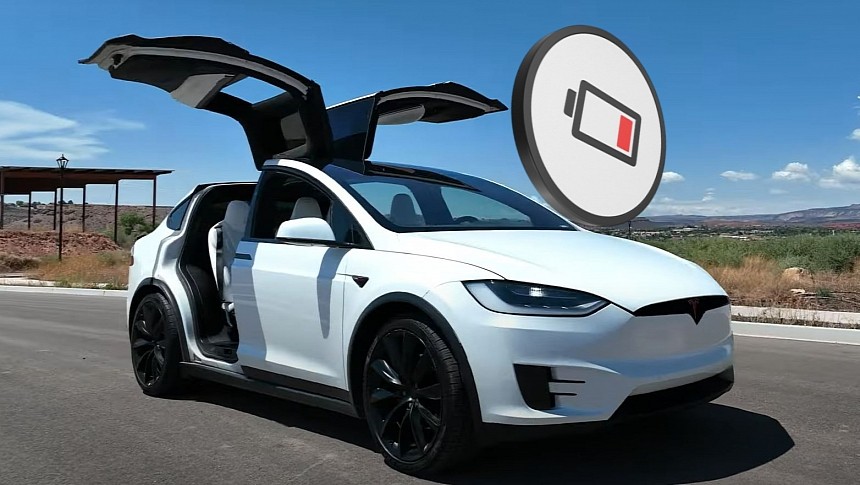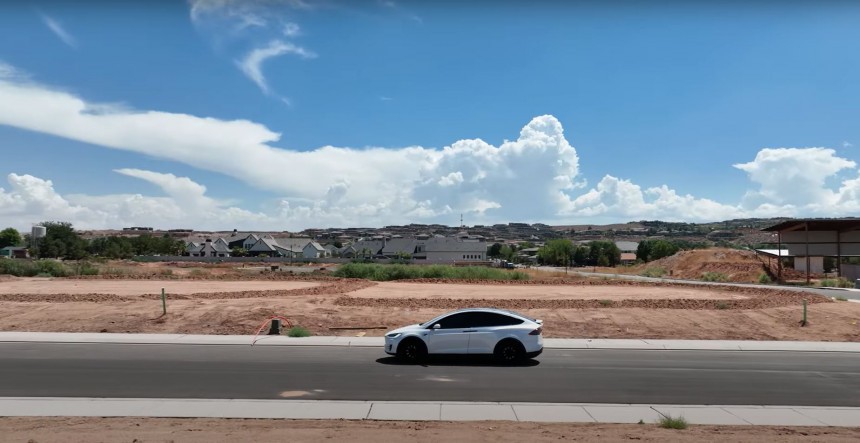We have all heard about very expensive high-voltage battery replacements. But what we haven't had a chance to discover a bit more in-depth is how these batteries hold up over longer periods of time. Well, now we get a good look at a family-owned Tesla Model X that's getting very close to the warranty expiration thresholds. Here's how it held up.
Six years ago, a 2017 Tesla Model X 100D would have set you back around $96,000 before handling and tax. Nowadays, you could buy one for around $30,000 or less. But should you? Fortunately, an owner is sharing his experience with the world. He's indirectly giving us the answer.
Unlike Fisker, Tesla will only replace your car's high-voltage battery for free if the energy retention drops below 70%. This warranty also has a time and mileage limit: eight years or 150,000 miles, whichever comes first.
That means a 100-kWh pack must become a 70-kWh pack before being replaced at no cost to the owner. Don't worry; these energy storage units are not scrapped or thrown into landfills. Even though they're not suitable for a pricey all-electric SUV anymore, they can still be of use in other implementations.
The all-wheel-drive 2017 Tesla Model X 100D has an EPA-rated range of 295 miles when new. The figure can vary depending on a plethora of factors, but that's the reference value.
This owner charged his EV to 100%, and the initial range estimation showed that he could have covered 240 miles before having to plug in.
He drove 202.8 miles before reaching zero miles of range. He used 72.3 kWh for the trip. If we were to judge how much life is left in the battery by this metric alone, we would be looking at 72.3%. That's just 2.3% shy of allowing this buyer to ask for a fresh energy storage unit! But it's not that simple.
The owner drove at an average speed of over 70 mph with the A/C on while the outside temperature ranged between 55 and 60 degrees Fahrenheit. That speed is bound to consume more energy because the motors have to work constantly to maintain it. Besides, this particular all-wheel-drive eSUV can't become front-wheel or rear-wheel drive to deliver a lower energy consumption.
The seven-year-old Model X 100D also has a power reserve. It doesn't just die at 0% state of charge. There's a buffer, even though some energy density was lost. But since it's not recommended to deplete the battery, this owner didn't risk it. It's also dangerous and costly to do that on a public road. He could have run out of juice on the highway. Moreover, a tow truck isn't cheap.
It's also worth pointing out that he didn't use Range Mode or any other energy-saving features.
As such, the degradation might not be that dramatic. The battery pack is old and has been put through many charging cycles. However, it's still good for around 203 miles of real-world range at highway speeds. That's okay for a Tesla EV that doesn't have the latest tech and battery chemistry.
Still, he's close to becoming eligible for a free brand-new high-voltage battery. The warranty is good until early 2025. He has a little over one year left and about 45,000 miles of driving to take the battery below the 70% energy retention threshold.
Unlike Fisker, Tesla will only replace your car's high-voltage battery for free if the energy retention drops below 70%. This warranty also has a time and mileage limit: eight years or 150,000 miles, whichever comes first.
That means a 100-kWh pack must become a 70-kWh pack before being replaced at no cost to the owner. Don't worry; these energy storage units are not scrapped or thrown into landfills. Even though they're not suitable for a pricey all-electric SUV anymore, they can still be of use in other implementations.
The all-wheel-drive 2017 Tesla Model X 100D has an EPA-rated range of 295 miles when new. The figure can vary depending on a plethora of factors, but that's the reference value.
This owner charged his EV to 100%, and the initial range estimation showed that he could have covered 240 miles before having to plug in.
He drove 202.8 miles before reaching zero miles of range. He used 72.3 kWh for the trip. If we were to judge how much life is left in the battery by this metric alone, we would be looking at 72.3%. That's just 2.3% shy of allowing this buyer to ask for a fresh energy storage unit! But it's not that simple.
The seven-year-old Model X 100D also has a power reserve. It doesn't just die at 0% state of charge. There's a buffer, even though some energy density was lost. But since it's not recommended to deplete the battery, this owner didn't risk it. It's also dangerous and costly to do that on a public road. He could have run out of juice on the highway. Moreover, a tow truck isn't cheap.
It's also worth pointing out that he didn't use Range Mode or any other energy-saving features.
As such, the degradation might not be that dramatic. The battery pack is old and has been put through many charging cycles. However, it's still good for around 203 miles of real-world range at highway speeds. That's okay for a Tesla EV that doesn't have the latest tech and battery chemistry.
Still, he's close to becoming eligible for a free brand-new high-voltage battery. The warranty is good until early 2025. He has a little over one year left and about 45,000 miles of driving to take the battery below the 70% energy retention threshold.










